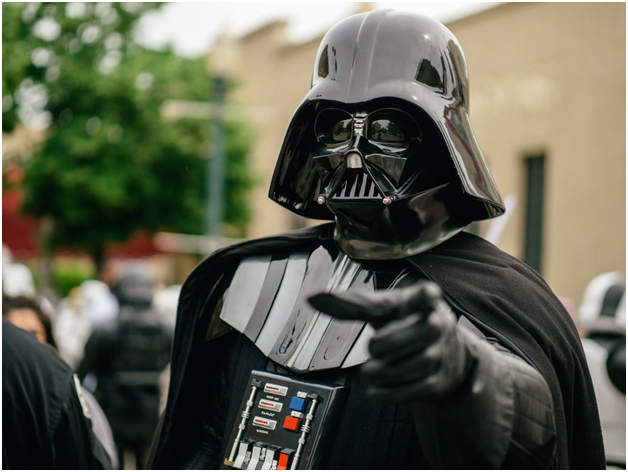Interesting Facts About One of Our Iconic WW2 German Helmets for Sale
Mar 16th 2022
When you hear the words “WWII German Helmet,” there’s really only one thing you can reasonably think of, and it is the iconic Stahlhelm that defined the German image throughout the greater part of the 20th century.
This early design was one of the most effective helmets ever to see combat and it has become so closely associated with Nazi Germany that (despite the fact that it was designed far earlier, see below) it has become an abject symbol for that period in history.
So put your historical knowledge to the test: Did you know the following facts about the Stahlhelm, without a doubt the most famous (or infamous) WW2 German helmet for sale here at SARCO, Inc.?
1.Stahlhelm literally means “steel helmet” in German, and the term can be used both to apply to generic steel helmets as well as to the infamous M1916 Stahlhelm.
2.The design is so recognizable that it has been widely featured in wartime propaganda as well as in historical depictions of Nazi Germany.
3.Despite the fact that the design is most closely associated with Nazi Germany, the basic design was actually designed during the First World War - hence the term “Model 1916 Stahlhelm.” It was intended to replace the spiked leather “Pickelhaube” helmet that was widely used by Imperial German troops on the Western Front. The leather predecessor was horribly inferior at protecting the wearer from shrapnel and bullets and was quickly replaced by steel helmets.
4.The name “Stahlhelm” was so popular, that members of the post-WWII Bundeswehr referred to their replacement helmets as “Stahlhelm,” despite the fact that the new ones were based on the American M1. (We can give them a break, both helmets are made of steel).
5.The steel pot of the Stahlhelm was so thick that it was resistant to common handgun calibers such as 9mm Luger and .45 ACP.
6.One of the reasons that the M1916 Stahlhelm’s steel was so tough is that the Germans made it from hard martensitic steel that contained larger amounts of nickel and silicon. The use of silicon in steel makes it stronger and more resistant to oxidation, and nickel helps to harden it.
7.The M1935 Stahlhelm was made from an even stronger alloy, containing higher concentrations of molybdenum, which makes steel much harder and stronger during heat treatment. The M1935 also had a smaller visor and flared skirt and was produced with rolled edges. This made it lighter and much more comfortable.
8.The Stahlhelm has come to be seen as one of the greatest helmets ever produced because of its ergonomics and protection. The M1916 and M1935 Stahlhelm both provided excellent protection for the occipital and temporal lobes of the brain against impact from shrapnel, bullets, and debris. The unique design of the Stahlhelm also protected sensitive areas of the user’s face (from the visor) and the brainstem, the base of the skull, and the top of the spine (from the flared skirt that extended to the rear of the neck).
9.Hitler was evidently presented with a modernized, proposed replacement for the Stahlhelm, but German sympathy was so great for the original design that he rejected it and German soldiers wore the M1935 version (pr variants) throughout the Second World War.
10.The Stahlhelm, specifically the M1935 model, has been adopted by many militaries around the world or at least influenced the design of the helmets they developed. Chinese, Chilean, Spanish, Swiss, Hungarian, Polish, Argentinian, and Irish forces were only some of those that issued Stahlhelms or commissioned the development of variants for their own militaries.
11.Ottoman forces in the First World War were receptive to the adoption of steel helmets like the Stahlelm but believed that the design would impair soldiers’ ability to hear commands issued in the field. As a result, the Ottoman Empire ordered several thousand Stahlhelm helmets, with the proviso that the visor, neck, and ear protectors be removed.
12.The original M1916 Stahlhelm was camouflaged with a color known as “Feldgrau,” or “Field Gray.” However, Erich Ludendorff, General of the Infantry, issued an order to officialize camouflage standards with respect to the environment and the season.
13.Darth Vader’s helmet was inspired by the design of the German Stahlhelm. Now try to unsee that when you look at our WW2 German helmets for sale.

14.The Stahlhelm survives in modern Germany, in the form of a German firefighters’ helmet, marked in bright fluorescent colors.
High-Quality WW2 German Helmets for Sale
Interested in a new helmet for your historical collection? Our collection of WW2 German helmets for sale will not disappoint. We carry a wide range of original models and authentic reproductions, not only of German helmets but also of other influential designs throughout history.
Take a look through our collection of German helmets (which also includes examples of the iconic Pickelhaube) to find what you need. If you have any questions, you can give us a call at 610-250-3960.

